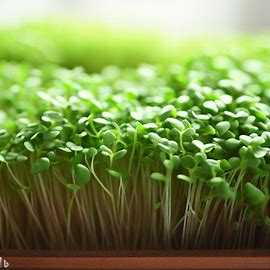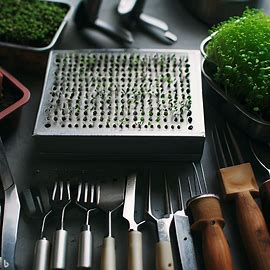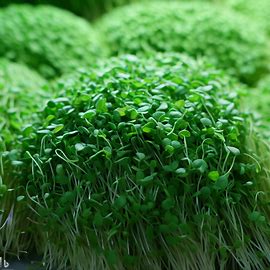Growing microgreens, those tiny lush leaves that pack a mighty punch of flavor and nutrition, may be just the green thumb venture you’ve been dreaming of. Whether we’re talking radish, kale, or arugula – these minuscule plants are trending in top-notch restaurants and health-conscious kitchens everywhere.
And why wouldn’t they? One bite into their vibrant goodness reveals an intense burst of taste that’s surprisingly delightful! Now imagine turning this mouth-watering microgreen passion into profit — fancy having your homegrown greens garnishing gourmet meals!
Get ready as we delve deeper into this leafy world; by the end of our journey together, you’ll be brimming with enough knowledge on how to grow and sell microgreens for maximum profitability.
Selecting Suitable Types of Microgreens to Cultivate

When it comes to growing microgreens, one of the first steps is selecting the right types to cultivate.
It’s important to choose varieties that are not only popular but also easy to grow.
Some popular choices include sunflower, radish, broccoli, and pea shoots.
These varieties offer a range of flavors and textures that will appeal to your customers.
Setting Up Your Indoor Garden for Growing Microgreens
Creating an indoor garden for your microgreens is relatively simple. You’ll need some basic supplies such as trays or containers, potting soil or growing medium, and seeds.
Find a suitable location in your home where you can provide adequate lighting and temperature control for optimal growth.
Essential Equipment and Tools for Microgreen Cultivation

To successfully grow microgreens, you’ll need some essential equipment and tools. These include:
1. Trays or containers with drainage holes: These will hold the growing medium and allow excess water to drain out.
2. Potting soil or growing medium: Choose a high-quality soil or growing medium that provides good drainage while retaining moisture.
3. Seeds: Look for organic seeds specifically labeled for microgreen production.
4. Light source: Ideally, use full spectrum LED grow lights that mimic natural sunlight.
5. Spray bottle: Use this to mist water over your microgreens during their growth cycle.
Optimal Growth Conditions for Healthy, Lush Microgreens
Microgreens thrive in specific conditions which promote healthy growth:
1. Temperature: Most microgreen varieties prefer temperatures between 60-75°F (15-24°C).
2. Lighting: Provide 12-16 hours of light each day using LED grow lights. Keep the light source about 2-4 inches above the microgreens.
3. Watering: Mist your microgreens with water once or twice a day, ensuring the growing medium remains evenly moist but not soggy.
Harvesting your Microgreens at the Right Time
Knowing when to harvest your microgreens is crucial for maximum flavor and nutritional value. Each type of microgreen has its own ideal harvesting time, usually between 10-14 days after germination.
Look for true leaves to develop while avoiding excessive growth, as this can lead to tougher texture and loss of tenderness.
Preparing and Packaging Your Harvested Microgreens for Sale

Once you’ve harvested your microgreens, it’s important to properly prepare and package them for sale. To maintain their freshness:
1. Gently wash and dry your microgreens using a salad spinner or paper towels.
2. Pack them in clamshell containers or breathable bags that allow air circulation while protecting delicate leaves.
3. Label each container with the variety name, date of harvest, and any relevant nutritional information.
4. Store in refrigeration (around 35°F/1°C) until sold.
Marketing Strategies and Selling Platforms for Your Produce
To successfully sell your homegrown microgreens, consider these marketing strategies:
1. Local Farmers’ Markets
Set up a booth at local farmers’ markets where you can directly interact with customers who appreciate fresh produce.
2. Social Media Platforms
Utilize platforms such as Instagram or Facebook to showcase your product through appealing visuals along with informative captions highlighting its benefits.
3. Restaurants and Cafes
Establish relationships with local restaurants or cafes interested in sourcing locally-grown produce like yours.
4. Subscription Services
Offer subscription boxes where customers receive regular deliveries of freshly-grown microgreens right at their doorstep.
Conclusion
With the right selection of microgreens and proper cultivation techniques, you can grow and sell these nutritious superfoods successfully.
By following this beginner’s guide, you’ll be well-equipped to start your own microgreen business and take part in the sustainable farming movement while satisfying the increasing demand for locally-grown produce.
Happy growing and selling!



